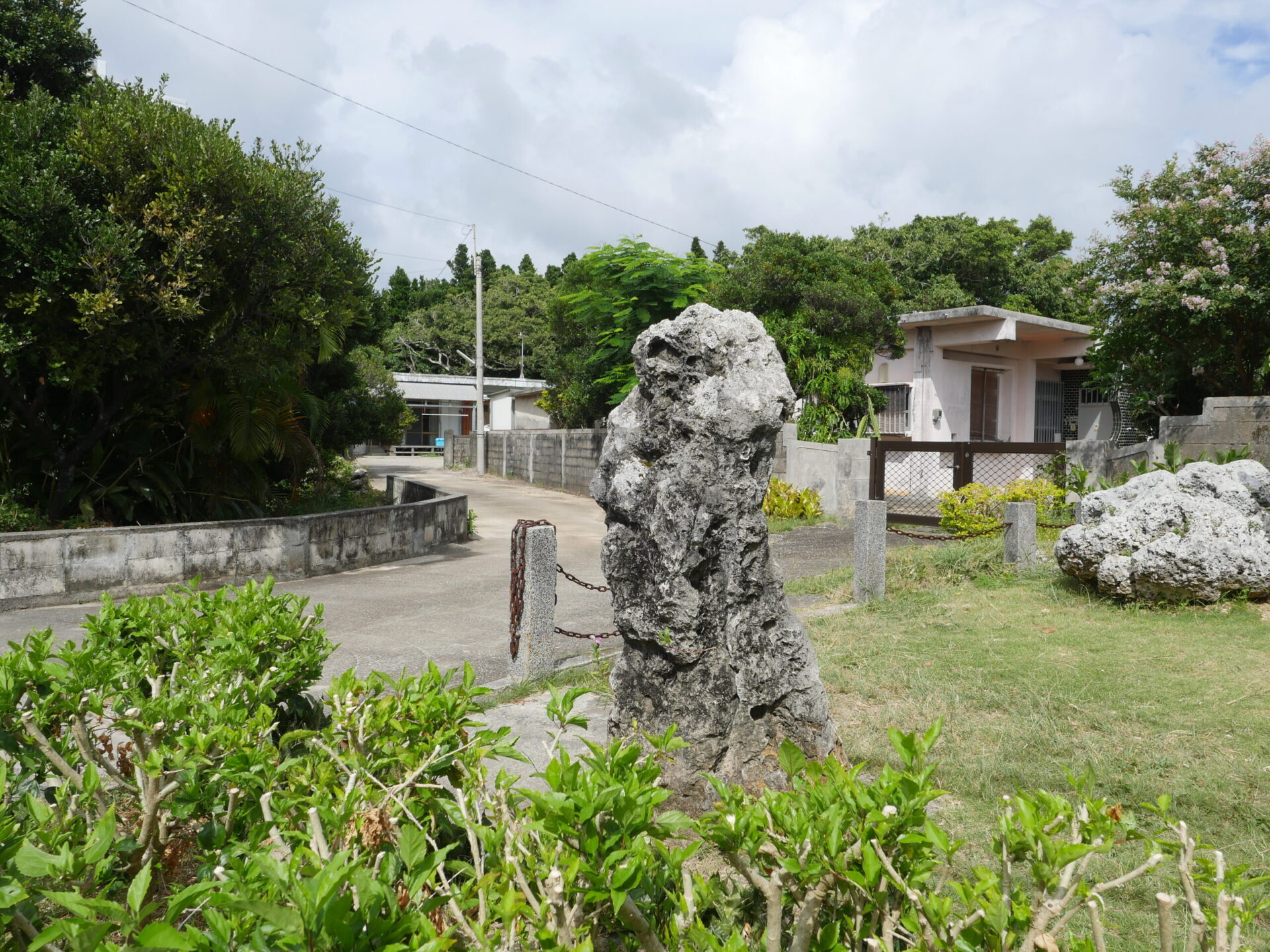
“A historical monument that tells the story of Miyako Island’s past—symbolizing the harsh head tax system once imposed on the people.”
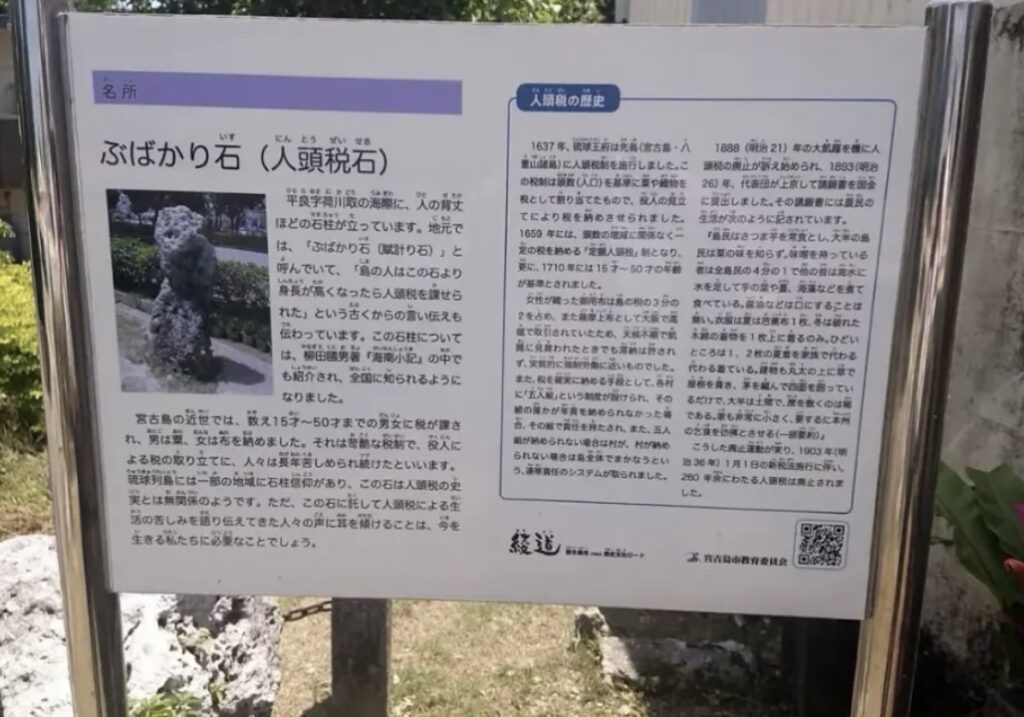
The Jintōzei Stone is a significant historical site deeply tied to the history of Miyako and the Yaeyama Islands. This 1.43-meter-tall stone pillar symbolizes the severe head tax system implemented in the region starting in 1637.
The head tax system was introduced after the 1609 invasion of the Ryukyu Kingdom by the Satsuma Domain, which led to a financial crisis for the Ryukyu royal government. To recover financially, the government imposed this tax exclusively on the Miyako and Yaeyama regions. The tax applied to all men and women aged 15 to 50. Anyone taller than the stone pillar was subject to taxation—men had to pay with millet, while women were required to offer Miyako-jōfu, a locally produced textile. The system was extremely burdensome and made life very difficult for the local people.
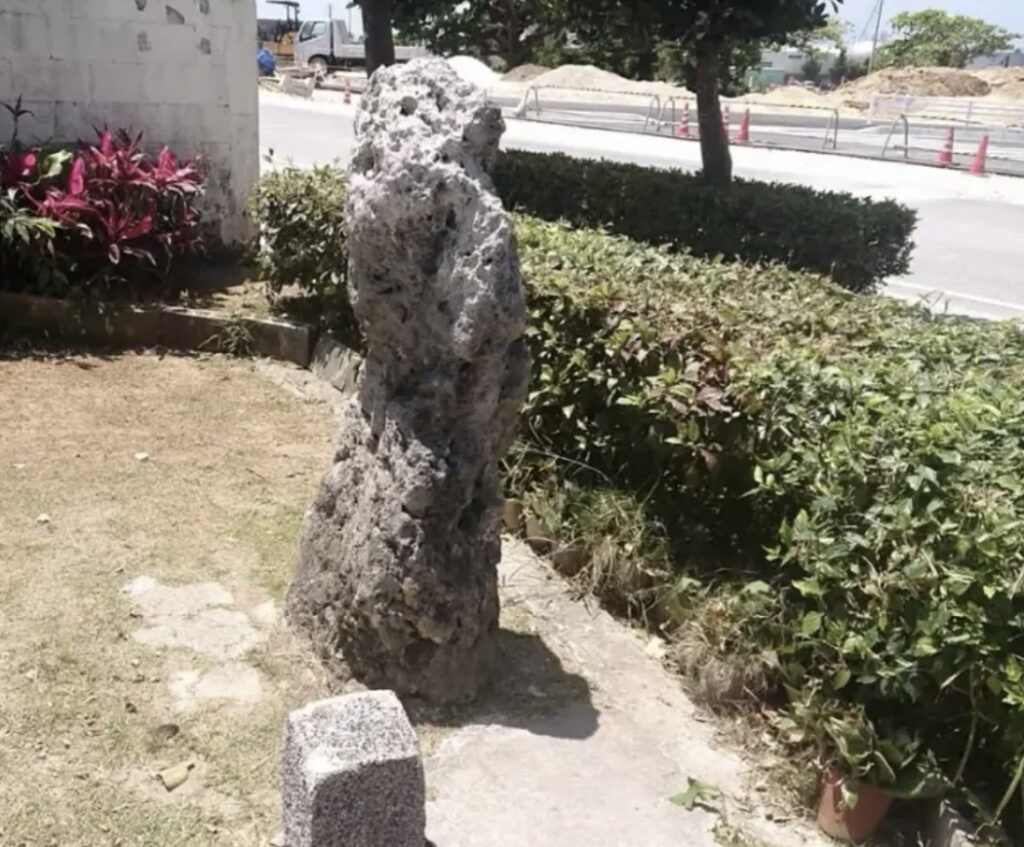
What made this system particularly harsh was that taxation was based solely on height. This led to a fear of physical growth among children and is believed to have hindered local development. The unjust tax persisted into the Meiji era but was finally abolished in 1903 following a direct petition to the Imperial Diet by the island’s residents.
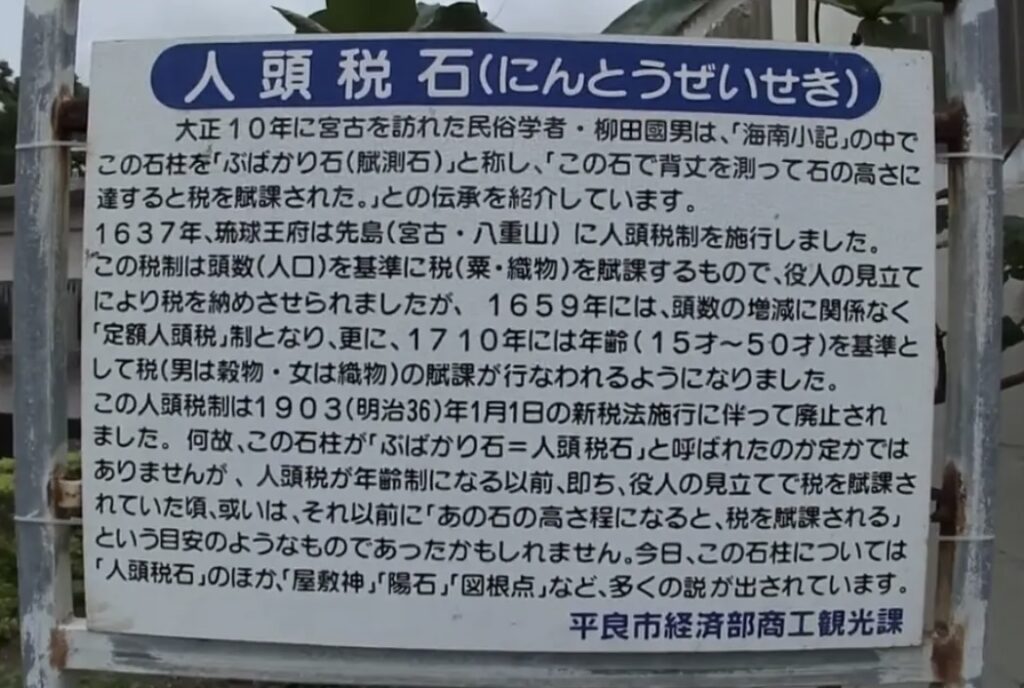
Today, the Jintōzei Stone remains a powerful reminder of the hardships endured by the people of Miyako and Yaeyama. It offers a tangible glimpse into the cruelty of past taxation systems and the strength of the local people who eventually succeeded in having the system abolished through collective action.
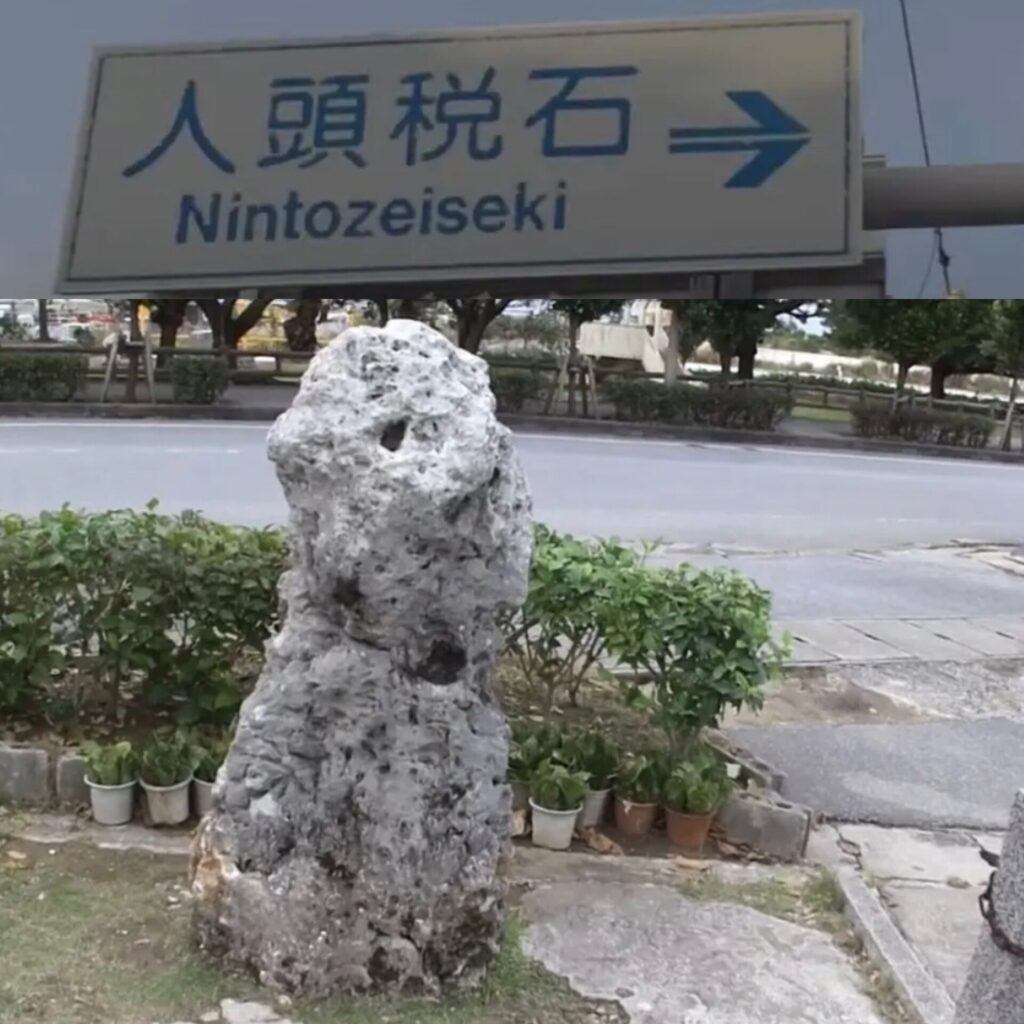
The stone is now preserved as an important cultural asset for learning about history and reflecting on the lessons of the past. When visiting Miyako Island, take the opportunity to see the Jintōzei Stone and deepen your understanding of the region’s unique history and culture.
Address: 90 Hirara Nikadori, Miyakojima City, Okinawa Prefecture, Japan








最近のコメント